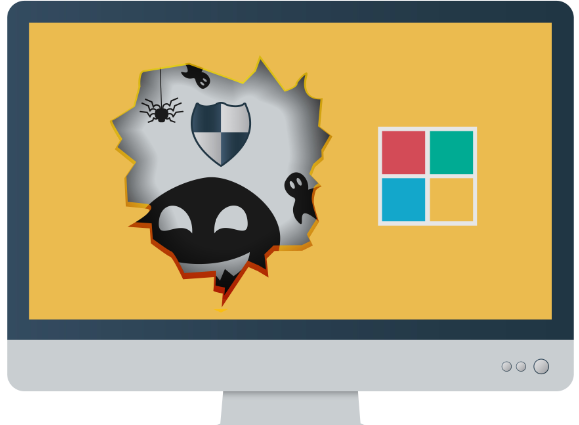Patch Tuesday, November 2020 Edition
November 11 2020Adobe and Microsoft each issued a bevy of updates today to plug critical security holes in their software. Microsoft’s release includes fixes for 112 separate flaws, including one zero-day vulnerability that is already being exploited to attack Windows users. Microsoft also is taking flak for changing its security advisories and limiting the amount of information disclosed about each bug.

Some 17 of the 112 issues fixed in today’s patch batch involve “critical” problems in Windows, or those that can be exploited by malware or malcontents to seize complete, remote control over a vulnerable Windows computer without any help from users.
Most of the rest were assigned the rating “important,” which in Redmond parlance refers to a vulnerability whose exploitation could “compromise the confidentiality, integrity, or availability of user data, or of the integrity or availability of processing resources.”
A chief concern among all these updates this month is CVE-2020-17087, which is an “important” bug in the Windows kernel that is already seeing active exploitation. CVE-2020-17087 is not listed as critical because it’s what’s known as a privilege escalation flaw that would allow an attacker who has already compromised a less powerful user account on a system to gain administrative control. In essence, it would have to be chained with another exploit.
Unfortunately, this is exactly what Google researchers described witnessing recently. On Oct. 20, Google released an update for its Chrome browser which fixed a bug (CVE-2020-15999) that was seen being used in conjunction with CVE-2020-17087 to compromise Windows users.
If you take a look at the advisory Microsoft released today for CVE-2020-17087 (or any others from today’s batch), you might notice they look a bit more sparse. That’s because Microsoft has opted to restructure those advisories around the Common Vulnerability Scoring System (CVSS) format to more closely align the format of the advisories with that of other major software vendors.
But in so doing, Microsoft has also removed some useful information, such as the description explaining in broad terms the scope of the vulnerability, how it can be exploited, and what the result of the exploitation might be. Microsoft explained its reasoning behind this shift in a blog post.
Not everyone is happy with the new format. Bob Huber, chief security officer at Tenable, praised Microsoft for adopting an industry standard, but said the company should consider that folks who review Patch Tuesday releases aren’t security practitioners but rather IT counterparts responsible for actually applying the updates who often aren’t able (and shouldn’t have to) decipher raw CVSS data.
“With this new format, end users are completely blind to how a particular CVE impacts them,” Huber said. “What’s more, this makes it nearly impossible to determine the urgency of a given patch. It’s difficult to understand the benefits to end-users. However, it’s not too difficult to see how this new format benefits bad actors. They’ll reverse engineer the patches and, by Microsoft not being explicit about vulnerability details, the advantage goes to attackers, not defenders. Without the proper context for these CVEs, it becomes increasingly difficult for defenders to prioritize their remediation efforts.”
Dustin Childs with Trend Micro‘s Zero Day Initiative also puzzled over the lack of details included in Microsoft advisories tied to two other flaws fixed today — including one in Microsoft Exchange Server (CVE-2020-16875) and CVE-2020-17051, which is a scary-looking weakness in the Windows Network File System (NFS).
The Exchange problem, Childs said, was reported by the winner of the Pwn2Own Miami bug finding contest.
“With no details provided by Microsoft, we can only assume this is the bypass of CVE-2020-16875 he had previously mentioned,” Childs said. “It is very likely he will publish the details of these bugs soon. Microsoft rates this as important, but I would treat it as critical, especially since people seem to find it hard to patch Exchange at all.”
Likewise, with CVE-2020-17051, there was a noticeable lack of detail for bug that earned a CVSS score of 9.8 (10 is the most dangerous).
“With no description to work from, we need to rely on the CVSS to provide clues about the real risk from the bug,” Childs said. “Consider this is listed as no user interaction with low attack complexity, and considering NFS is a network service, you should treat this as wormable until we learn otherwise.”
Separately, Adobe today released updates to plug at least 14 security holes in Adobe Acrobat and Reader. Details about those fixes are available here. There are no security updates for Adobe’s Flash Player, which Adobe has said will be retired at the end of the year. Microsoft, which has bundled versions of Flash with its Web browsers, says it plans to ship an update in December that will remove Flash from Windows PCs, and last month it made the removal tool available for download.
Windows 10 users should be aware that the operating system will download updates and install them on its own schedule, closing out active programs and rebooting the system. If you wish to ensure Windows has been set to pause updating so you can back up your files and/or system, see this guide.
But please do back up your system before applying any of these updates. Windows 10 even has some built-in tools to help you do that, either on a per-file/folder basis or by making a complete and bootable copy of your hard drive all at once.
As always, if you experience glitches or problems installing any of these patches this month, please consider leaving a comment about it below; there’s a better-than-even chance other readers have experienced the same and may chime in here with some helpful tips.




